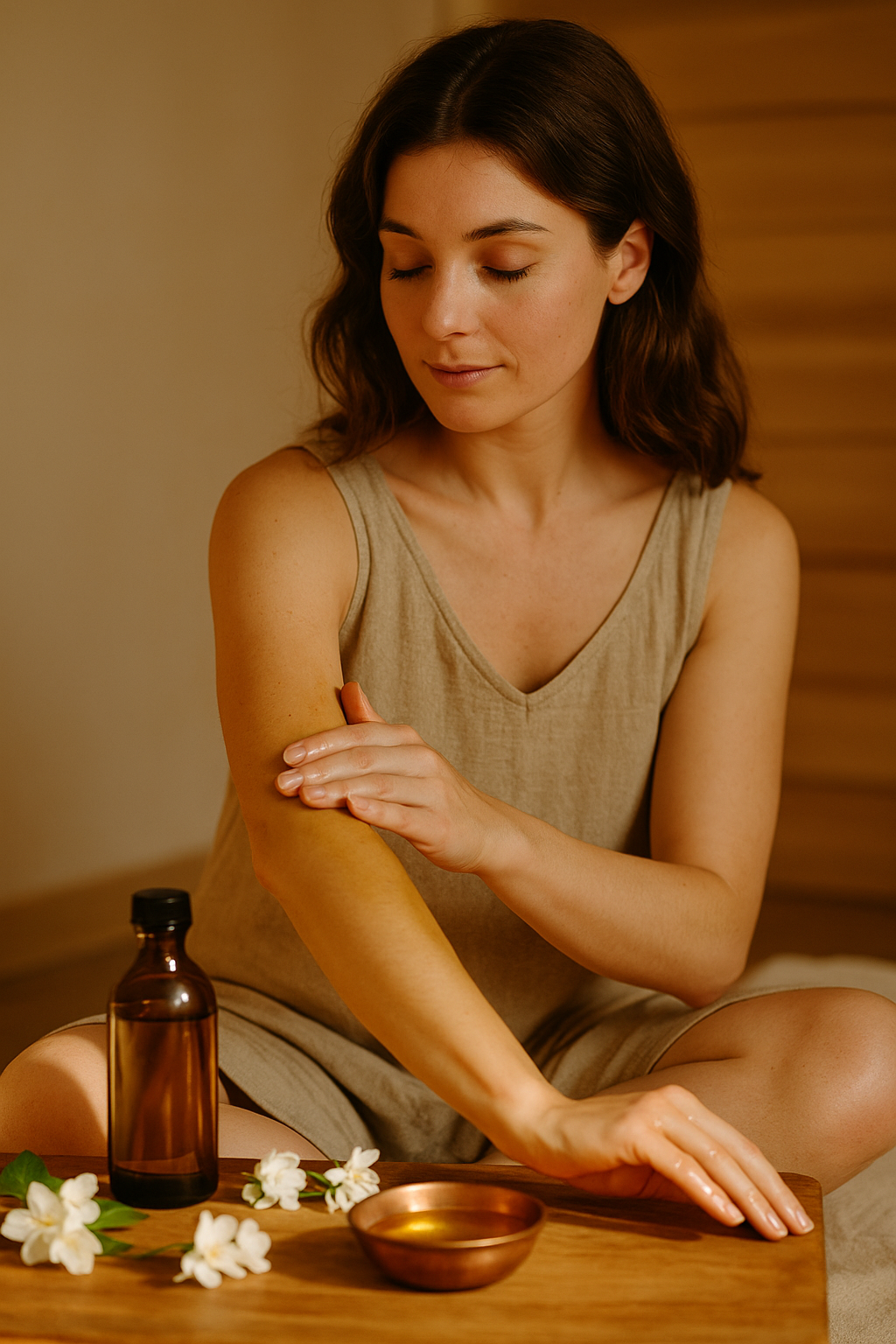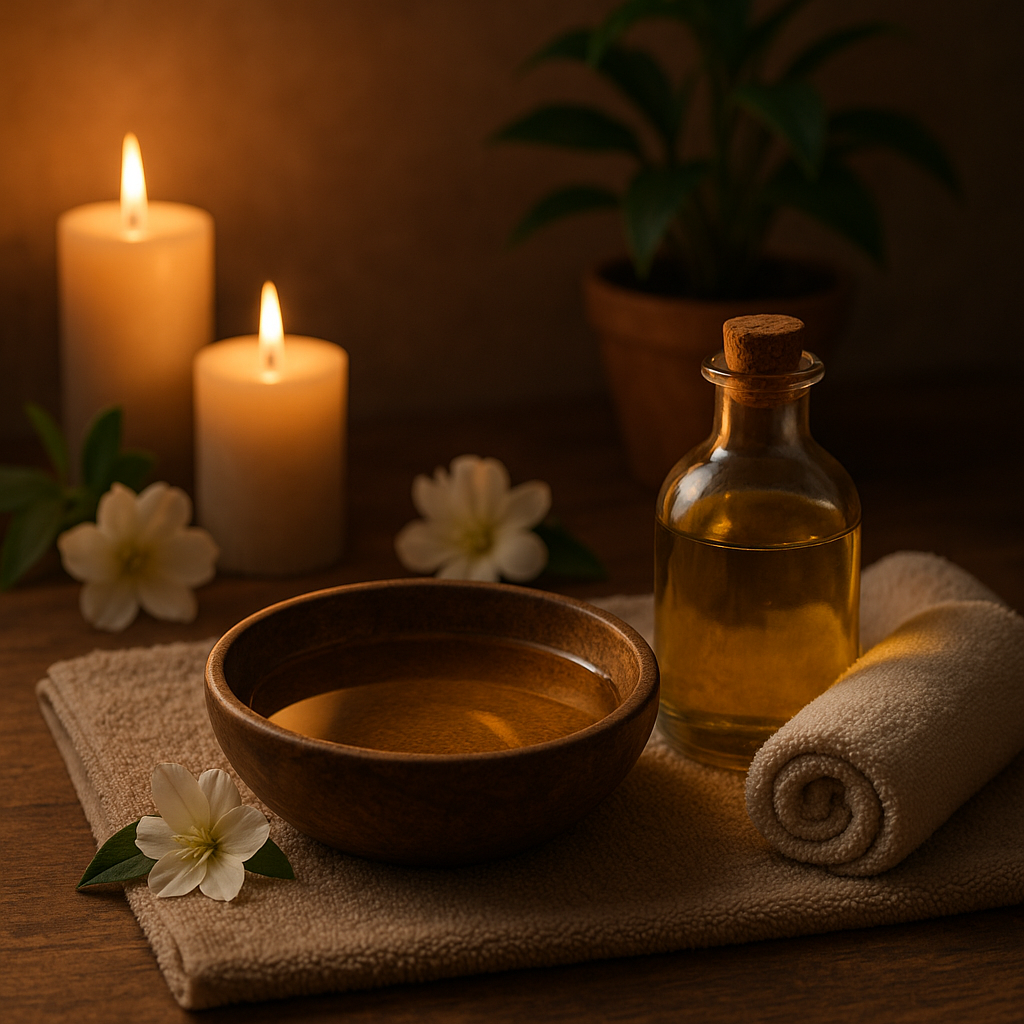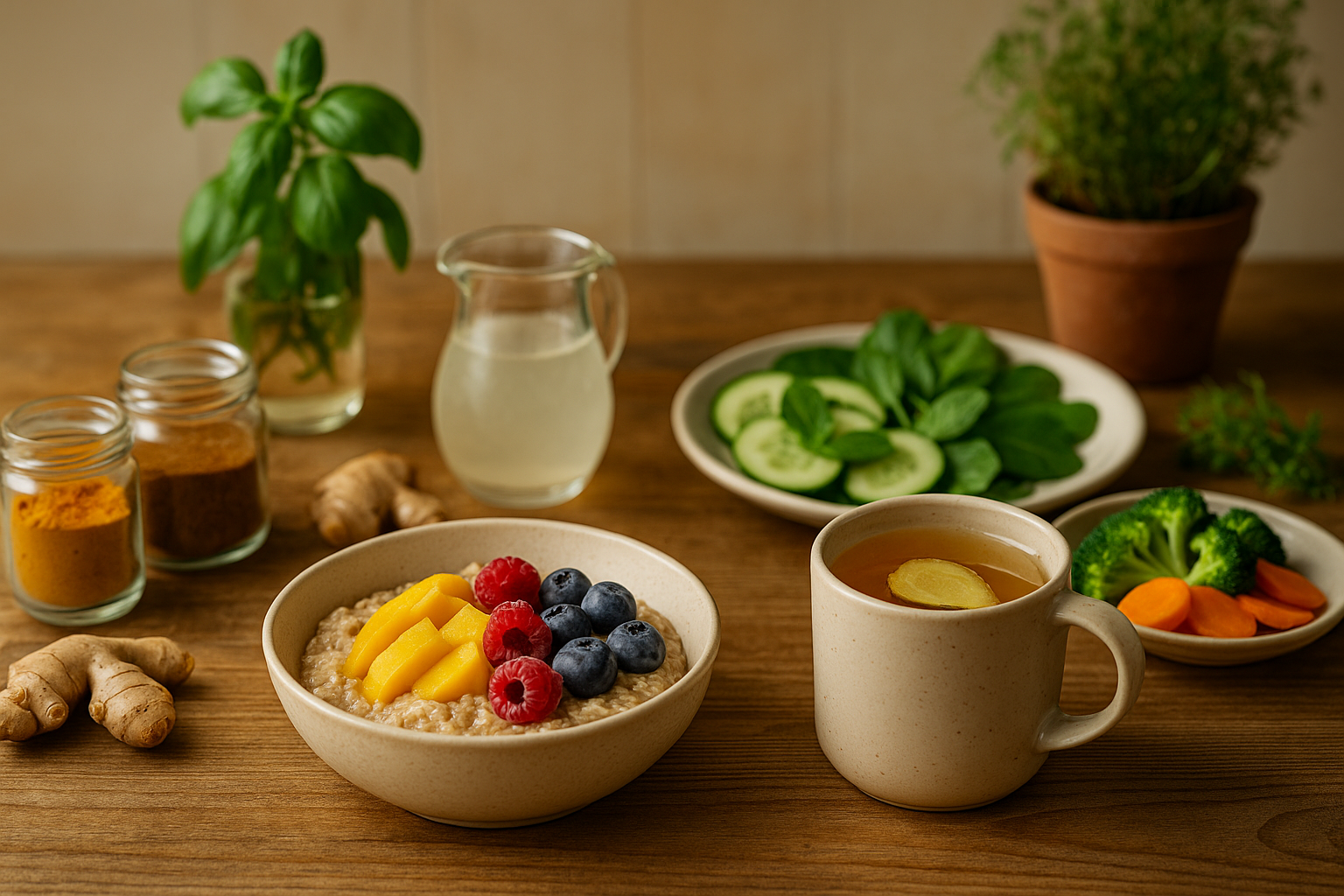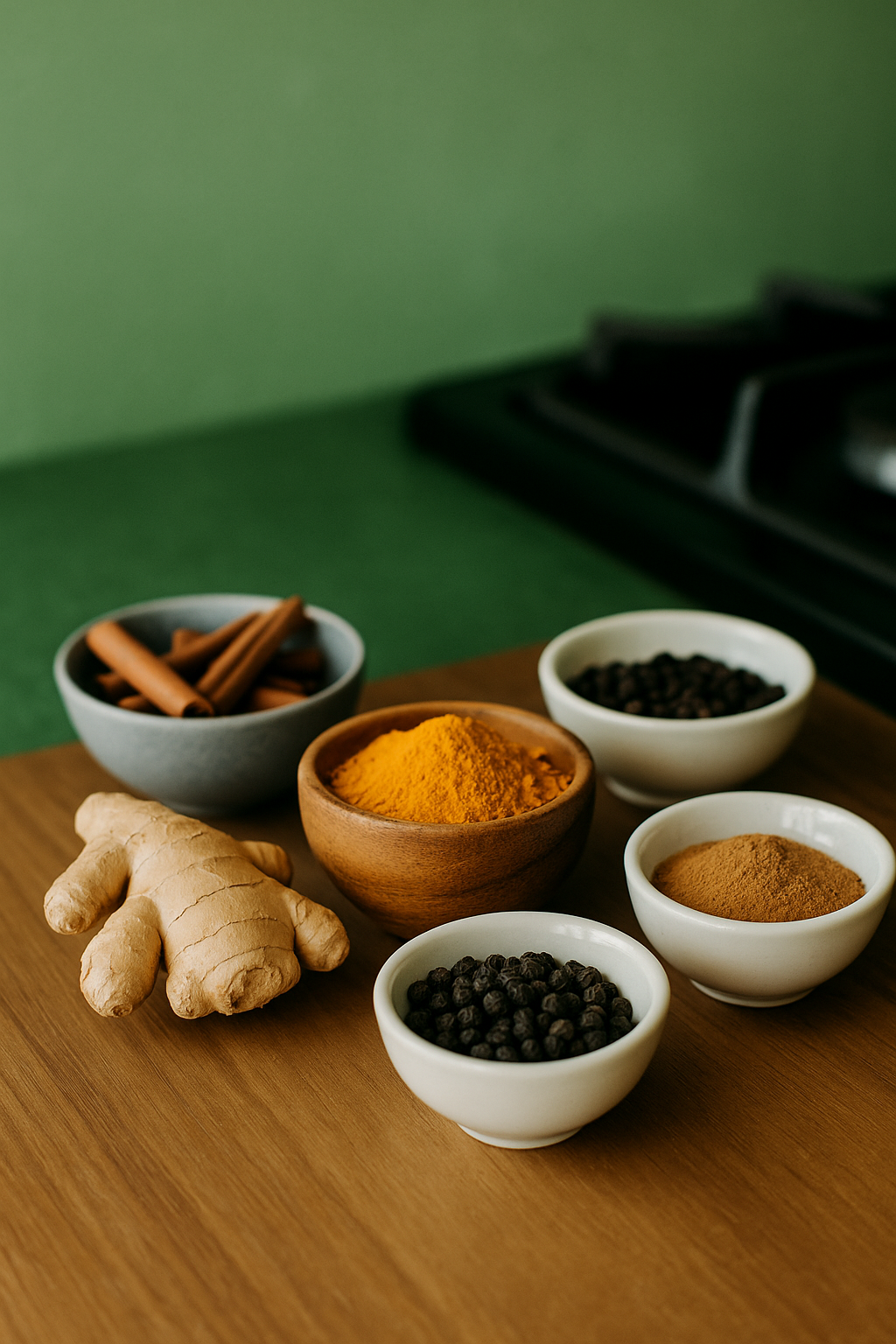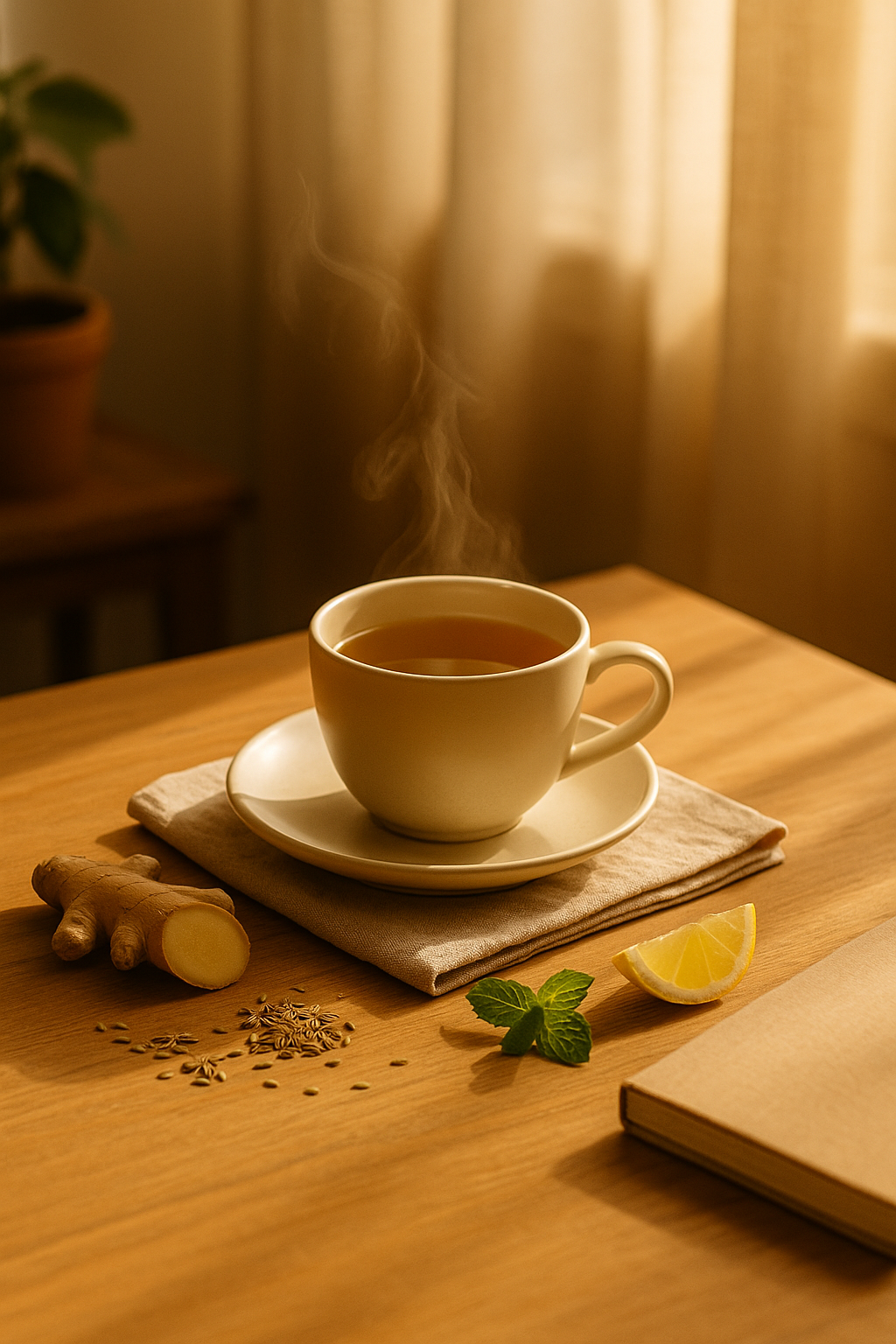
Ayurveda for Digestive Issues teaches us that symptoms like bloating, gas, or irregular bowel movements are not random discomforts — they reflect an imbalance in your inner fire, agni. This ancient wisdom offers natural, mindful ways to restore digestive harmony through diet, rhythm, and awareness.
🔥 Ayurveda for Digestive Issues and the Fire of Digestive Health
In Ayurveda, digestion is the foundation of health and the key to physical and mental balance. Everything depends on agni, the digestive fire that transforms food into energy, clarity, and resilience. When agni burns steadily, nutrients are absorbed efficiently, toxins are eliminated, and the mind remains clear and calm.
When this fire weakens, metabolism becomes irregular and ama—undigested residue—accumulates in the body, manifesting as bloating, heaviness, gas, or intestinal inflammation. Maintaining a strong and balanced agni is essential not only for preventing disease but also for cultivating ojas, the vital essence that sustains long-term health and vitality.
🌿 Ayurvedic View of Digestive Imbalance and the Doshas
Each person has a unique combination of the three doshas—Vata, Pitta, and Kapha—and each one affects digestion differently:
- Vata: Its dry and irregular nature may cause constipation, gas, and inconsistent digestion. It benefits from warm, oily foods and a consistent daily routine.
- Pitta: With its intense inner heat, it can lead to acidity, gastritis, or intestinal inflammation. Cooling foods, avoiding irritants, and regular mealtimes help calm this fire.
- Kapha: Naturally slow and heavy, it tends toward sluggish digestion, bloating, and post-meal fatigue. Light, spiced meals and an active lifestyle are recommended.
Understanding your dominant dosha helps you tailor diet and lifestyle habits to rekindle digestive fire naturally.
🌼 Ayurvedic Habits to Improve Digestive Balance
Ayurveda offers simple yet profound daily practices to support healthy agni and address common digestive issues:
- Eat mindfully: Avoid distractions, sit comfortably, and chew slowly.
- Drink digestive teas: A blend of ginger, cumin, coriander, and fennel supports digestion without irritation.
- Keep regular meal times: The digestive system thrives on rhythm and consistency.
- Have an early, light dinner: Ideally, three hours before bedtime to allow proper assimilation and rest.
- Walk briefly after meals: Promotes intestinal movement and prevents bloating.
- Abdominal massage: Applying warm oil in gentle circular motions relaxes the abdomen and stimulates digestion.
Even small rituals—like lighting a candle or expressing gratitude before eating—help awaken agni and connect digestion with awareness.
🌞 Ayurveda for Digestive Issues and the Art of Digesting Life
To care for digestion is to care for your entire being. Ayurveda for Digestive Issues reminds us that good digestion not only transforms food but also renews energy and mental clarity. When the inner fire is balanced, the body feels light, the mind clear, and life flows with greater harmony.


